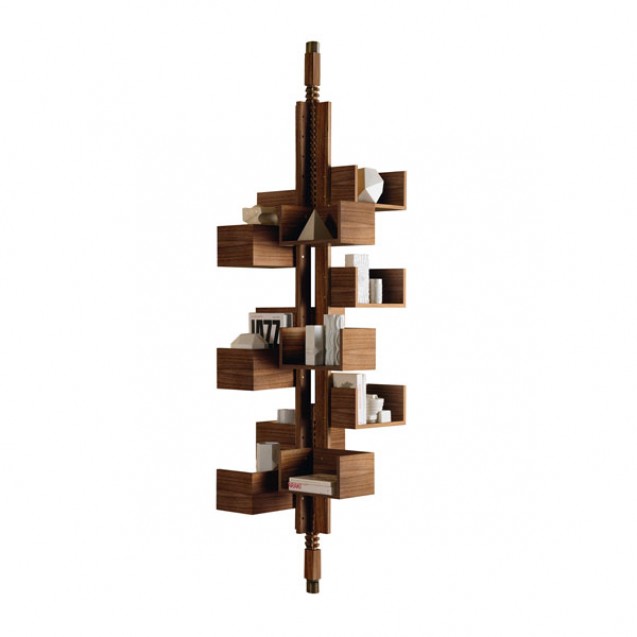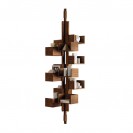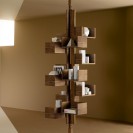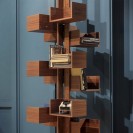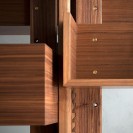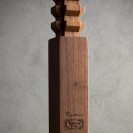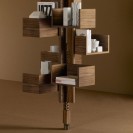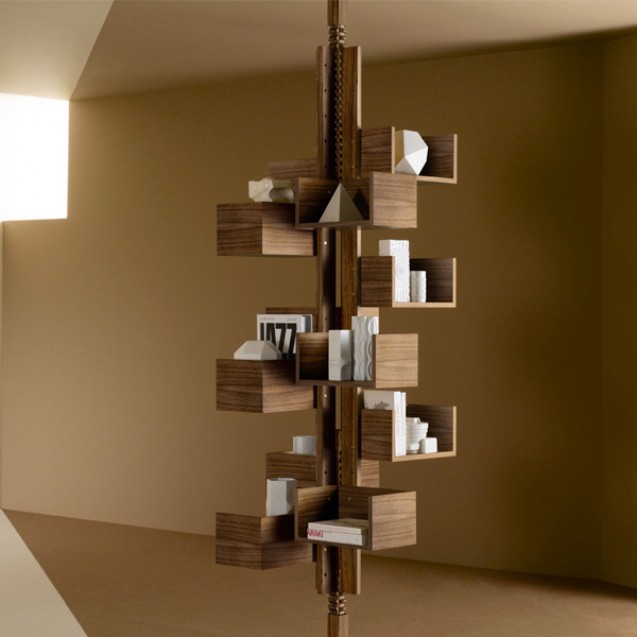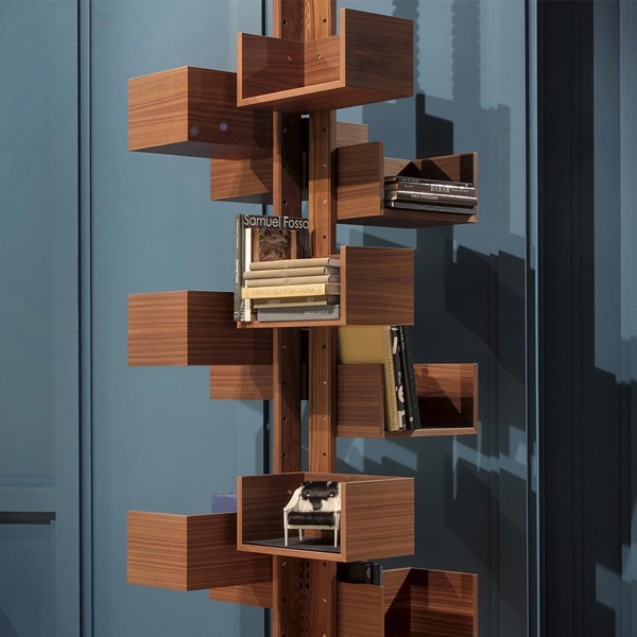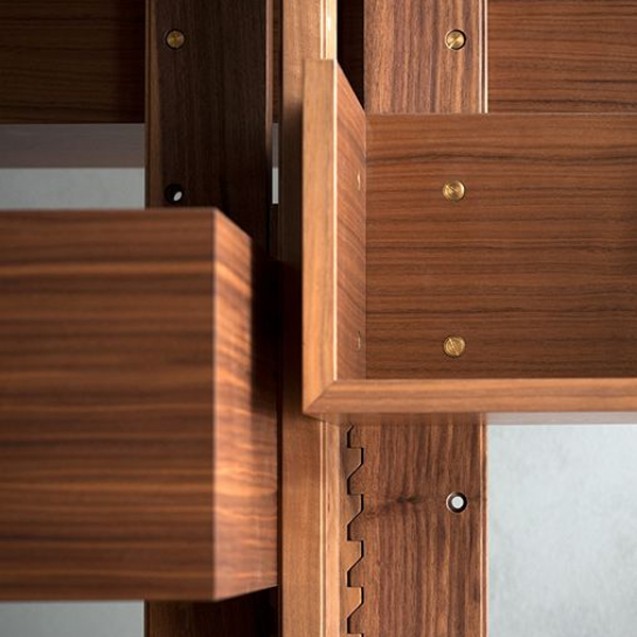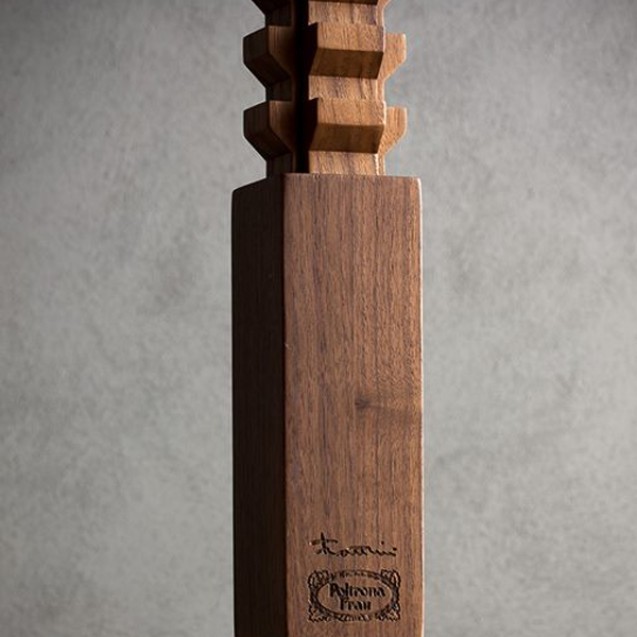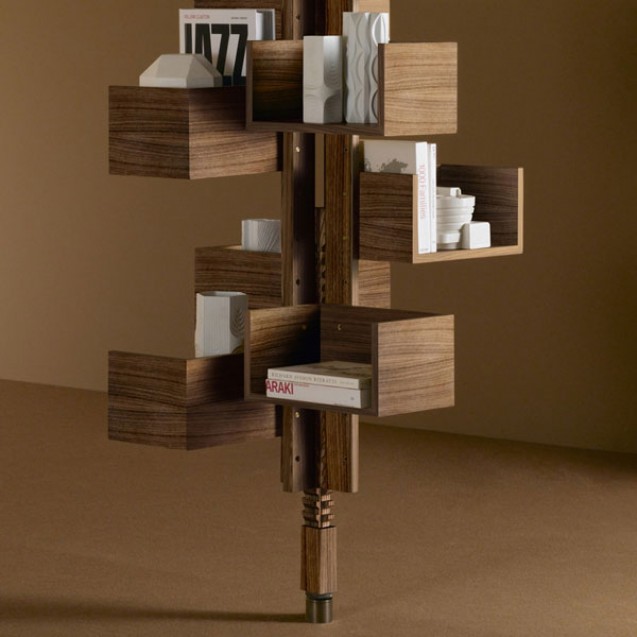Albero
Designed
in the late 50’s by Gianfranco Frattini as a “floor-to-ceiling” central bookcase, Albero was created for use in
interior settings rather than for mass production. The Albero bookcase is formally associated with the Neo-Liberty period and, in terms of
product type, with the floor-to-ceiling bookcase systems that were popular
throughout the 1950’s and 60’s.
The structure is distinctive both for its intricate cabinet work and its sculpted
appearance, which ensures that it is the centrepiece of the room. The
supporting structure of the Albero bookcase is in solid Canaletto walnut. It is
made up of two toothed supports, with a special rack joint, and four vertical
pillars with regular holes that make it possible to assemble either 8 or 12
shelves. The latter are in MDF with wood veneer. The caps, at the ceiling and
on the floor, are attached to the ends of the toothed supports. The top cap is
inserted in a “cup” anchored to the ceiling. The bottom cap grips the floor
with a non-slip rubber. The bookcase is held securely in position by four metal
locknuts in the caps. The fixing elements (caps and cup) have an antiqued
burnished steel finish. The signature of the designer and the Poltrona Frau
logo are laser engraved on the lower toothed support. The Albero bookcase can
rotate 360°. On request, the shelf surfaces can be embellished and protected
with a 4 mm-thick Cuoio Saddle leather insert with tone-on-tone dyed edge. The
insert has hand markings around the edge and is branded with the Poltrona Frau
logo.
| About Designer | |
|---|---|
Gianfranco Frattini |
Gianfranco Frattini was born
in Padua on 15 May 1926. He graduated from Milan Polytechnic with a degree in
Architecture in 1953 and joined Gio Ponti's studio. As early as 1954, thanks to
Ponti, he began working with Cesare Cassina, who would always remain an
important figurehead for him.He was one of the founders of ADI and was involved
in the management of the Triennale di Milano on several occasions. He opened
his own design studio, initially with Franco Bettonica, in Via Lanzone, Milan.
He worked with numerous companies in the field of furniture and lighting design
including Bernini, Arteluce, Knoll and Artemide, for whom he and Livio
Castiglioni designed the “Boalum” floor lamp, a true masterpiece and, above all
else, an innovation in terms of product type.
Frattini's relationship with
Pierluigi Ghianda, a cabinet maker from Bovisio Masciago, was also extremely
important. Beyond the human aspect, this relationship exemplified his passion
for working at close quarters with craftsmen, always attentive to the quality
of manufacturing and the design stories. Wood was without doubt Frattini's
preferred material. Some of his interior designs, another professional field in
which Frattini has left a significant legacy, formed the backdrop for several
of Milan's trendiest social venues in the early 1960s, particularly the Stork
Club and the St. Andrews restaurant. His designs in Portofino, Capri and
the interiors of the Hilton hotel in Tokyo are also particularly memorable. His
work was referenced at the Compasso d’Oro awards numerous times, and he was
also a winner of the Triennale di Milano Medaglie and Gran Premio
awards. Domus magazine regularly published his work. In 1988 Pier Carlo
Santini dedicated an important monograph to him. Gianfranco Frattini died in
Milan on 6 April 2004. In 2007 Giuliana Gramigna and Federica Monetti wrote
Gianfranco Frattini: architetto d’interni e designer (Gianfranco Frattini:
interior architect and designer) for Franco Angeli. His products are displayed
in the permanent collections of the biggest design and decorative art museums
in the world. |



